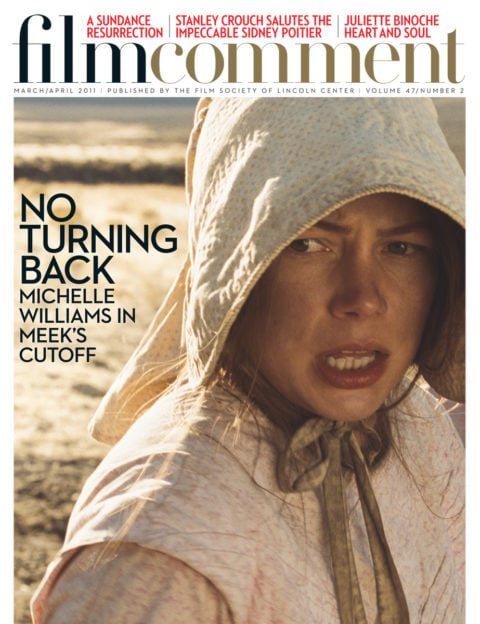
“You write what’s said. you don’t lie,” says playwright Andrea Dunbar (1961-1990) in an archival clip featured in The Arbor. In Clio Barnard’s bewildering debut documentary, actors take this pocket manifesto one step further by lip-synching to audio recordings of Barnard’s interviews with Dunbar’s grown children and circle of family and friends. The performative pastiche filters and refracts the life of the alcoholic council-estate resident through several elements: the to-camera “monologues,” a plein air performance of her first play, and clips from two television documentaries about the wunderkind, one at the beginning of her career at age 15, and the other just before its premature end at age 29, due to a brain hemorrhage. But, in fact, the individual who takes center stage in the film is Dunbar’s daughter Lorraine, whose troubled life uncannily and tragically echoes her mother’s travails with substance abuse and teenage pregnancy. What emerges is a curious mix of avant-garde technique and social-realist case study, equally indebted to Barnard’s art-world-video background and Dunbar’s own close-to-the-bone writing.
The opening, or overture, to the film is its most fanciful: a close-up of grass startlingly invaded by two large dogs, shortly followed by Lorraine and sister Lisa’s account of a fire in their childhood bedroom, as flames burn behind them. Dunbar’s child by a Pakistani, Lorraine (Manjinder Virk, glowing with a disarming purity) is unsentimentally reflective—bracing in her gently expressed openness about her resentment and the depths of her suffering through drugs, prostitution, and a sadistically abusive boyfriend. Christine Bottomley offers counterpoint “as” Lisa, pregnant and blonde, who comes across as more optimistic if self-righteous, in many ways a typical younger sibling with a different perspective from the front lines.
What’s disorienting are the muted tones of the interviews, which were obviously not originally spoken with the intonation of a dramatic performance. This lends a curious low affect to the recounting of extraordinary incidents, and this disjunction, as well as Barnard’s hyper-immaculate RED photography, are a characteristic of other recent film work by artists such as Steve McQueen and Miranda July. As Lorraine becomes the central focus in the second half of the film, her matter-of-fact, downcast delivery becomes a drumbeat anticipating her inevitable downfall. In coverage of the film so far, Barnard has said that her techniques draw attention to the constructed nature of documentary material, but if you close your eyes, you’re basically listening to a radio oral history, with “clips” (often bridged, again like radio, through Au Pairs song snippets) from the performance of Dunbar’s clichéd-seeming debut play The Arbor, which Barnard staged in the original Bradford estate.
A side effect of this reverse ventriloquism is that the actors sometimes don’t or can’t add much to the often dour audio. George Costigan, for example, as a mechanic boyfriend of Dunbar’s, seems merely to be acting “around” or decorating his given voice with bits of business (though he’s also cast because of his title role in Alan Clarke’s film Rita, Sue, and Bob Too, for which Dunbar wrote the screenplay, adapting her own play). Most successful perhaps are Lisa and Lorraine’s foster parents from across the street; Monica Dolan and Neil Dugeon make the most of their tearful material, demonstrating their nimbleness as performers without calling attention to it.
Intentionally or not, the excerpted performance of Dunbar’s play is overshadowed by the testimony from the lives that inspired it. Partly this reflects the enduring attraction of lip-synching, which taps into the anxieties of selfhood expressed through the voice (which helped make The King’s Speech so affecting). And ultimately the most avant-garde, and readily assimilated, aspect of the film is its notion of the patchwork: Barnard’s orchestration helps express the barely controlled chaos of a life under construction, or falling apart.








